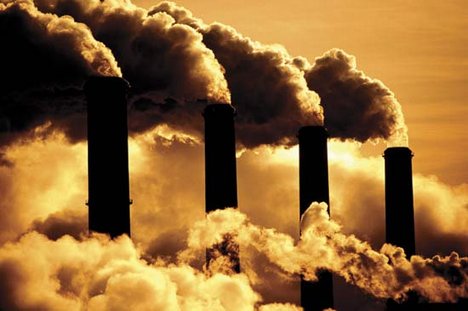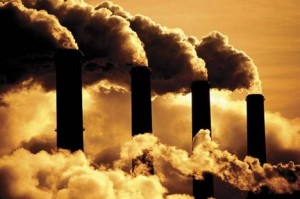
MANILA (Mindanao Examiner / June 25, 2013) – The Philippine Movement for Climate Justice and the Freedom from Debt Coalition have demand that the Asian Development Bank stop messing up with the climate and energy agenda and programs in the Philippines.
The two groups said ADB must cease pretending it is an institution working to abate the impacts of climate change and desist from any further interference in the energy sector of the country in the wake of the miserable failure of the power privatization scheme which it pushed the Philippine government to undertake.
PMCJ and FDC are once again making this call in view of the on-going ADB –sponsored Asia Clean Energy Forum in Manila. It viewed the gathering as a high profile public relations stunt to deodorize ADB’s intensive investment and promotion of dirty energy and privatization of energy and power sectors.
A Dirty Energy Legacy
It said from 1969 to 2010, ADB had used $8.7B in financing different fossil fuel projects, a big chunk of which was used in building coal-fired and gas-fired power plants.
In June 2009, ADB also approved its Energy policy – its third major energy policy document that aimed to give ”secure and clean energy” for Asia. But this was mere rhetoric because just after this document was approved, a total of $1.5 billion worth of fossil fuel projects was also approved. This clearly showed the inconsistencies in its pronounced goals and obvious financing of dirty and harmful energy.
Mountains of available data belie the Bank’s claim, and its 2008 to 2012 “clean energy showcase” clearly exposes the sham. In 2008, at the start of its clean energy investments included 33% going to coal and large hydro projects.
PMCJ and FDC said $100 million of the total $650 million that went to the construction of the 4000-MW Tata Mudra Ultra Mega Power Project (coal plant) in India and the refurbishment of the 600-MW coal plant in Masinloc in Zambales province in the Philippines were tagged as clean investments.
It said in 2010, ADB’s so-called “clean energy” investments amounted to around $1.7 billion of which $233.2 million was devoted to construction of gas-fired plants in China, Uzbekistan and Azerbaijan. And in 2011, of the $2.1 billion total “clean energy” investments, some $465.1 million was allocated to the construction of 2 large hydroelectric dams in Laos, while $115 million went to the construction of 1600-MW and 750-MW gas-fired power plants in Thailand and Vietnam, respectively.
In 2012, out of $2.35B of “clean energy” fund, about $400 million went to the construction of two waste-to-energy facilities in China and $107.29 million to a gas-fired plant in Thailand.
In fact, in a 2012 study by the World Resource Institute, the ADB ranked 3rd amongst the top International Financial Institution funders (of coal-fired power plants) in the world with a total funding of $3.9 billion for 21 coal plants across Asia.
Its track record clearly speaks for itself, ADB as a promoter of dirty and harmful energy.
ADB’s Power Privatization: A Big Failure, A Showcase of Corporate Greed
The ADB is also responsible for engineering the current power crisis caused by the Electric Power Industry Reform Act and which after 12 years since its enactment has resulted in the Philippines having the most expensive residential electricity rates and second highest industrial electricity rates in Asia.
The EPIRA has not done anything to lower electricity rates; instead, it has removed the ownership, management and control of government as it allowed the privatization of the government’s power assets to a few big monopolies whose only intention in acquiring such properties is profit. And while EPIRA vests a lot of responsibilities on the Energy Regulatory Commission to protect consumers, the ERC has failed miserably in this task.
ADB’ so-called power sector reforms and privatization program are not about providing access to all, especially the poor nor are these about making power rates more affordable for the poor and the general public.
The Wholesale Electricity Spot Market which is the heart of the privatization and restructuring program financed by the ADB, which is expected to provide lower rates has virtually become a mechanism of price manipulation. It would seem that the problems we face today are results of the so-called solutions pushed by ADB in the past.
ADB’s Coal Trail in the Philippines
PMCJ and FDC also emphasized that the ADB has a clear hand in dirty and harmful energy projects in the Philippines. The coal-fired power plant in Naga in Cebu province in central Philippines which was strongly opposed by the people due to its hazardous effects on the health of the host community was heralded by the ADB as a “clean energy” project for its adherence to the use of circulating fluidized bed technology, the groups said.
It was later found to have produced four times more coal ash than a conventional coal-fired power plant. Municipal health records show an increase in morbidity and mortality rates in the area. The project is also a clear depiction of ADB’s funding of dirty and harmful source of energy and its privatization policies at work.
The acquisition and rehabilitation of the Masinloc coal-fired power plant received $490.400 in ADB assistance and this plant annually releases 3,766,177 metric tons of carbon dioxide in the environment. Add to that the $210,000 ADB loan for the privatization and refurbishment of the Calaca coal-fired power plant which annually releases 3,850,841 metric tons of CO2.
With climate change a scientifically and globally accepted truth it is dismaying that the ADB continues to support and fund projects which will hasten climate change and put the lives of people at risk.
Both PMCJ and FDC maintained that these three projects are pursued not in the interest of providing accessible power and electricity to nearby communities, rather it is in compliance with the demand of industries located in economic zones within the areas, and with the powers that be in the power sector in pursuit of big bucks.
“Now we ask how on earth an institution like the ADB – with its dirty track record of financing dirty and harmful energy projects and credit-pushing electricity reforms hostile to people and communities – can openly proclaim itself as an institution working and advocating for true clean, accessible and affordable energy for all?” it asked.
Expose the Truth
The continuing support of the ADB of projects which clearly fuel climate change hampers the adaptive capacities of communities and places the lives of people in serious danger, according to the statement sent by PMCJ and FDC to the Mindanao Examiner.
“This trumps the Bank’s self-proclaimed image and stature. ADB is a two-faced Janus who continues to stand in the way of clean energy development in countries like the Philippines. PMCJ and FDC continue to maintain that while ADB aggravates the people’s misery and that of the entire nation, it allows corporate greed of a few big monopolies to reign in the energy and power industry,” the statement said.



